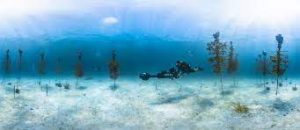Acidification Of Great Lakes :By NOAA

A study by the National Oceanic and Atmospheric Administration (NOAA)’s Ocean, Coastal, and Great Lakes Acidification Research Plan said, by 2100 even the Great Lakes of North America might approach acidity at the same rate as the oceans.
- The increase in atmospheric carbon dioxide has caused the world’s oceans to turn more acidic, but the new finding that the freshwater bodies are also turning acidic is a shock.
- Scientists are building a sensor network to measure the carbon dioxide and pH levels of the Lakes, starting with developing a system to detect the water chemistry trends of Lake Huron, one of the five Great Lakes
Acidification :
- It is a phenomenon resulting from the release of protons from certain substances into the ecosystem. These emissions increase the acidity (decrease in pH) of water and soils.
- Acidification of oceans or freshwater bodies takes place when excess carbon dioxide in the atmosphere gets rapidly absorbed into them.
- The absorption of carbon dioxide leads to a lowering of the pH, which makes the water bodies more acidic.
Consequences of acidification
- It will decrease native biodiversity,
- It will create physiological challenges for organisms,
- There are possibilities of permanently altering the structure of the ecosystem.
Great Lakes:
- The Great Lakes of North America, or simply the Great Lakes, are five interconnected bodies of water straddling the US-Canada border. They are the largest group of freshwater lakes in the world.
- The Great Lakes are Superior, Michigan, Huron, Erie, and Ontario.
- The US-Canada border passes through Lakes Superior, Huron, Erie, and Ontario.
- Lake Michigan lies entirely in the US.
- They drain into the Gulf of St Lawrence in the North Atlantic through the St Lawrence River.




